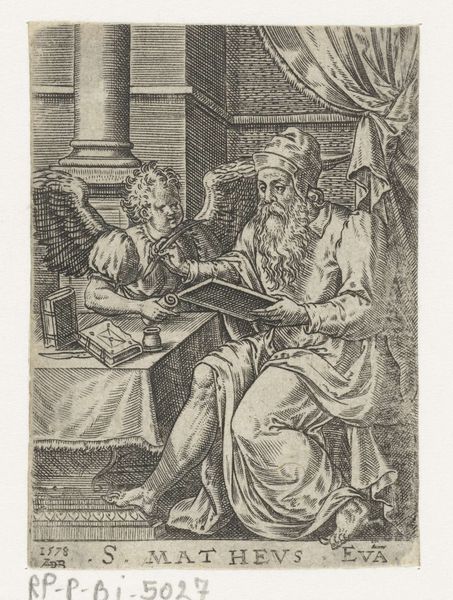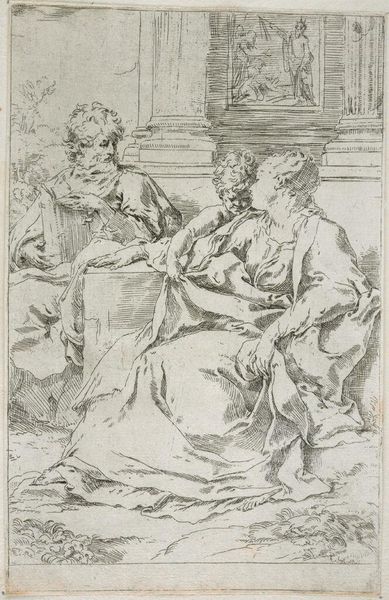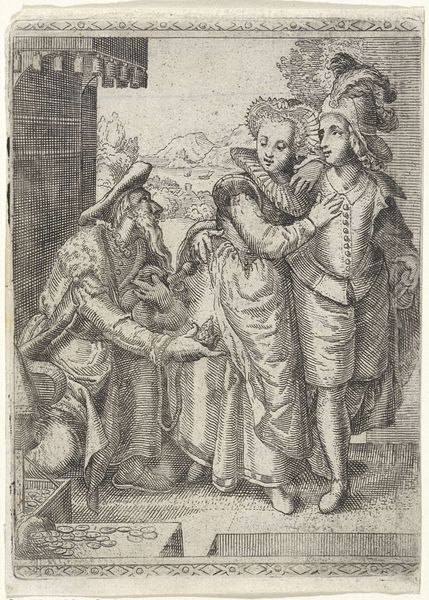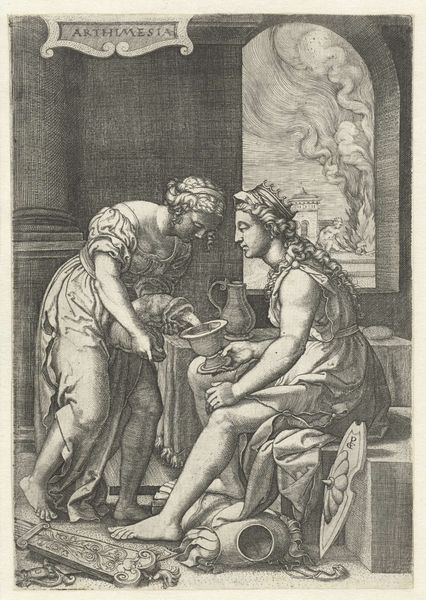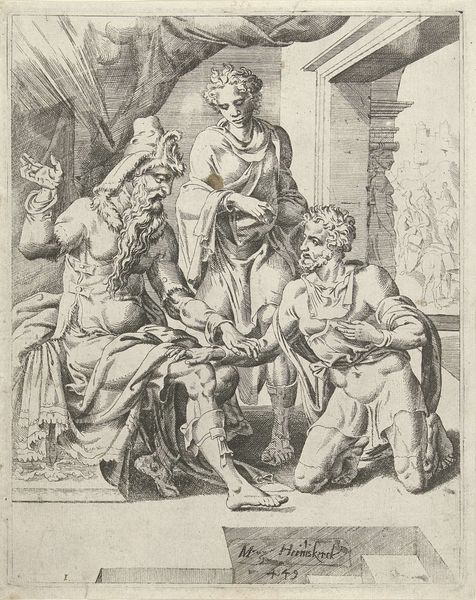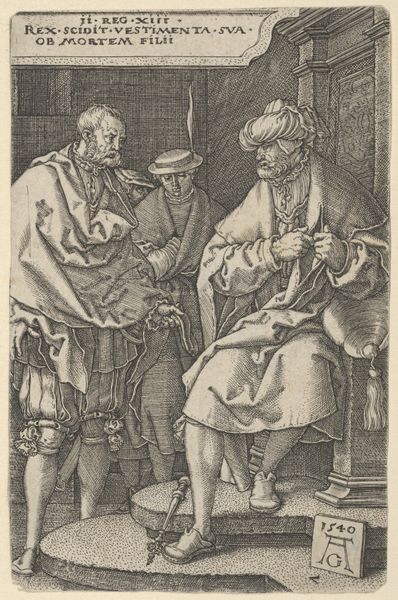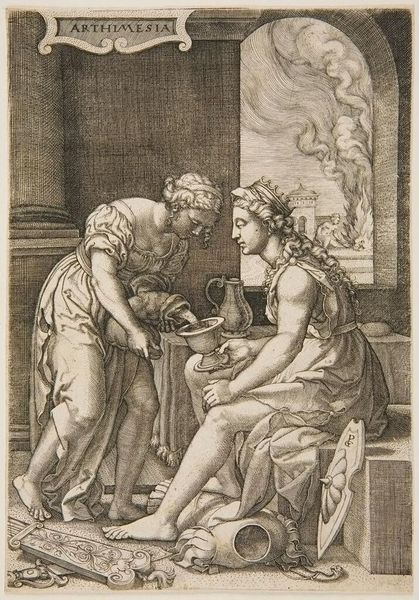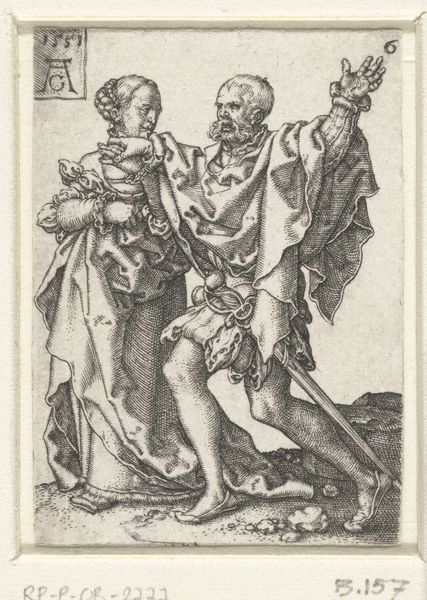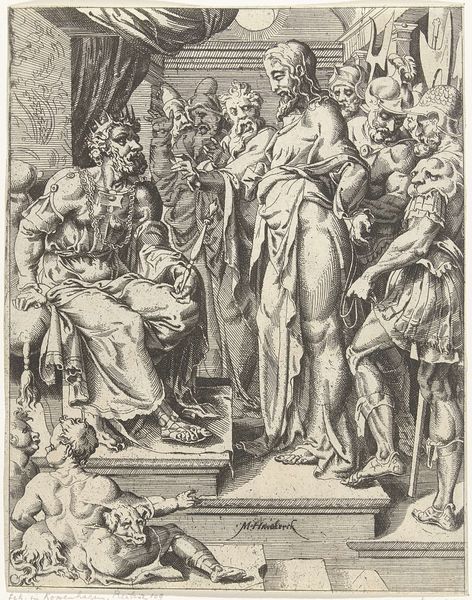
print, engraving
#
portrait
#
baroque
# print
#
old engraving style
#
genre-painting
#
engraving
Dimensions: height 96 mm, width 137 mm
Copyright: Rijks Museum: Open Domain
Curator: Welcome. Before us is a 1607 engraving called "Zittend elegant paar," which translates to "Seated Elegant Couple." It's a genre painting made by an anonymous artist, and the rendering gives it an "old engraving style." Editor: My immediate thought is the tension, the energy contained within that small space. Their gaze locks, and there's a silent dialogue happening that we can only guess at. There’s definitely some friction at play. Curator: Indeed, the work is a compelling example of Baroque portraiture, fitting within a wider interest in capturing not just likeness, but character and social standing. It's also intriguing to consider how class is portrayed here. Editor: Absolutely, look at the details in their garments! And the backdrop almost feels theatrical, placing them in a specific performance of elegance. The framing is ornate, almost overpowering. What statements are the artist attempting to create with this obvious luxury? Curator: Considering the era, we must examine the rising merchant class and their ambitions. These depictions served as signals of newfound wealth and perhaps social mobility. The couple is centered on a background seemingly from nature yet ordered by design, creating a dialogue between natural and artificial wealth and refinement. Editor: And look at the power dynamic. The man appears almost persuasive, possessive with a hand around her shoulder. It hints at complex relationships of ownership during this time. Curator: Such imagery circulated within print culture, shaping societal perceptions of marriage and gender roles. What does this scene mean for women beyond simple finery, and what behaviors are permitted for those of certain means? The act of sharing a printed image with multiple families could encourage dialogues regarding behavior and proper respect among members of their society. Editor: It's this contrast between surface elegance and implied power dynamics that stays with me. We should note this work and similar artworks are not relics of history but potent visual records through which past oppressions are presented. Curator: Thank you, yes. Thinking about the social currency of imagery helps me see these Baroque prints not just as beautiful objects, but complex cultural documents. Editor: And by considering them as complex cultural documents, hopefully our audience might leave seeing both the artistic accomplishments and areas for historical reviewal with nuanced respect.
Comments
No comments
Be the first to comment and join the conversation on the ultimate creative platform.
